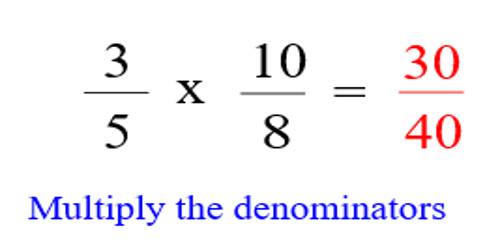Courts and Alternatives
The adversarial system, which is one of the great legacies of the British rule in India, has worked reasonably well for centuries. However, in view the docket explosion, the faith and confidence in the Judiciary has undergone substantial erosion. The functioning of the system is also being questioned in different quarters having regard to the procedural wrangles, enormous costs and inordinate delay involved in it.
Justice delivery system in India is bursting at the seams and may collapse unless immediate remedial measures are adopted not only by the judiciary but also by the legislature and the executive. The reasons for the present situation are not far to seek. Firstly, there is a qualitative and quantitative change in the nature of litigation. Not only have new and diverse areas of litigation have cropped up, there is also immense increase in the quantum of litigation leading to what is often called “docket explosion”. Secondly, litigation against the State and the State-like entities has grown substantially, and prompt and complete compliance by the State of the orders by way of writs, etc., would be absolutely necessary for bringing the litigation to a conclusion. Thirdly, despite an increase in the number of courts and tribunals all over the country not only in the traditional areas of civil and criminal litigation but also in other fields like consumer protection, service matters, etc., no solution for early resolution of dispute has been found out. But theincrease in the number of courts and tribunals is not enough to deal with the increase in litigation by geometrical proportions. Often we find that not only there is no proportionate growth in the number of courts and judges, but even the existing vacancies remain vacant for a long time for one reason or the other.
Under the International Covenant on Civil and Political Rights, 1966 which is an optional protocol to Universal Declaration of Human Rights, 1948, every country shall have to ensure that a citizen shall have an effective remedy for enforcing his rights or freedoms. This is not a new concept. Since the ages, the Civilization has recognized the right of every person to seek redressal in a Judicial Tribunal. The legal maxim ubi jus ibi remedium is not an empty promise. This principle is well adumbrated in Sec. 9 of the Code of Civil Procedure, 1908. Unless the Civil Court’s jurisdiction is explicitly or by necessary implication is ousted, all rights can be enforced in a Civil Court. Disputes do arise among people in relation to their personal life, family life, community life, economic life and political life. In a democratic society, people should be free to have access to adjudicative processes in Courts or other Tribunals. In a vast country like India with varying cultures and firm economic stratification, all sorts of disputes are brought before the Civil Courts. Number of cases has increased so fast that the entire adjudicative system and /or justice delivery system is over burdened.
Indeed, a leading weekly magazine puts the total number of pending cases in our Courts at 24 million. With an average time to settle each case being put as 20 years, we require 324 years to clear the legal backlog. Is it a cause for despair? Should we ignore this huge backlog and still adhere to traditional adjudicative process in the Civil Courts?
Recourse to alternative dispute resolution mechanism has been thought of because courts are over-burdened. The said system emanates from dissatisfaction of many people with the way in which disputes are traditionally resolved resulting in criticism of the Courts, the legal profession and sometimes lead to a sense of alienation from the whole legal system.
Its emergence is one of the most significant movements, both in terms of judicial reforms as well as conflict management. It has become a global necessity. Its utility is now unquestionable.
The mechanism to settle the dispute by reference to a third person had been in practice in ancient India, where in ancient India when people needed their disputes resolved by arbitrator or tribunal not established by the King. People used to get their disputes resolved by arbitrators or tribunals not established by the King. Yajnavalkya and Narda stated that Village Councils (Kulani), Corporation (Sreni) and Assemblies (Gorth/Puga) used to decide law suits. These institutions have been described as arbitral tribunals which have a status of Panchayat in modern India.
In the Panchayat system the word Panch (arbitrator) and Panchayat (arbitration) are as old as Indian history. Panchayats in village, Panchayats of caste, Panchayats of creeds etc. had played important role and exercised considerable influence in many racial and caste questions.
The need of the day is to explore the possibility of creating a dispute resolving machinery other than the court.
Emphasis must be laid to the need of establishing a culture of amicable solution of disputes whether at a post-litigation or pre-litigation stage.
The philosophy of ADR is to motivate people to resolve their disputes amicably and for this purpose it is necessary to examine ADR’s main trends and underlying objectives.
One of the motivations of ADR is the principle of “Cooperative problem solving” which bring within its fold theories and strategies of negotiation, including in particular problem – solving theories of negotiation.
Another benefit of ADR is reduction of costs apart from avoidance of delay in litigation. In short, it allows the parties greater control over resolving the issues between them, encourage problem solving approaches and provides for more effective settlements covering substance and nuance. It also tends to enhance cooperation and preservation of relationship.
The experience abroad shows that it has found increasing favor in many countries and particularly in U.S.A.
Let me take up the role of the Court in ADR movement like the United Kingdom, in many matters like Commercial suits, directions may be introduced with reference to relevant rules, e.g., practice directions, specimen documents and check list in the light of paragraphs 72/A1 0 72/A-30 of the Supreme Court Practice introduced in March 1990 by Hothouse J.
In United Kingdom alternative dispute resolution has more recently come to form an integral part of the Commercial Courts’ own procedure. By a Practice Statement issued on 10th December, 1993, Crasswell J stated that in future cases, the Commercial Court would invite the parties to consider possible additional methods of resolving their dispute, and would retain a list of bodies offering conciliation and arbitration services. This would be emphasized where the amount at stake was relatively small in relation to the likely costs of a full trial.
The role of ADR under the 1993 practice note was extended by a further Practice Notes issued on 24th January 1995, which is concerned with the length and cost of civil litigation, and sets out check list of questions to be answered and lodged with the Court not later than two months before the date of hearing. Some of the said questions are as follows:
10. Have you or counsel discussed with our client(s) the possibility of attempting to resolve this dispute (or particular issues) by alternative dispute resolution (ADR)?
11. Might some form of ADR procedure assist to resolve or narrow the issues in this case?
12. Have you or your client(s) explored with the other parties the possibility of resolving this dispute (or particular issues) by ADR?
It is necessary to make reforms in Court organization and Court procedures. ADR should be employed by the Courts and legal practitioners as frequently as possible.
In Texas, courts may order parties to undertake non-binding ADR procedures such as Arbitration, Mediation, Settlement Conference, Settlement Weeks, Ministerial, Summary jury trials and early neutral evaluation.
Courts can also direct parties to refer a case to be dealt with by way of arbitration by a third party, whose finding is initially non-binding. Such practices are prevalent in United States of America, Australia and some other countries. It is known as Court Annexed Arbitration.
Similarly court annexed mediation process may also be taken recourse to and is regarded as complementary rather than alternative to litigation.
Conciliation has been extended by courts in family matters including children’s issues, which may cover also financial, and property issues.
In U.S.A. Judicial settlement conferences and settlement weeks have resulted in a high success rates.
Courts also appoint ‘Neutral Expert Fact finding’ to provide evidence before the court which may then be tested in courts.
With a view to evaluate the strength and weakness of the respective cases of the parties, disputes are referred to third-party lawyer within 160 days of the commencement of litigation. The system is known as Early Neutral Evaluation.
In some of the federal states of U.S.A., legislation has been passed to provide for private judging (also known as ‘rent a Judge’) such as Texas, California, New York, Ohio and Oregon.
High-low contract is a procedure where the parties may agree that if the finding on an issue by adjudication is decided against a party the amount of damages, etc., shall be within the parameters of the financial award.
Multi-Door Courthouse system which has been developed in U.S.A., if followed, could offer the prospect of greater access to justice and more economical and faster resolution of disputes.
Professor Frank E.A. Sander who was the author of the said system identified two important questions:
1 What are the significant characteristics of various alternative dispute resolution mechanisms (such as adjudication by courts, arbitration, mediation, negotiation, and various blends of these and other devices)?
2 how can these characteristics be utilized so that, given the variety of disputes that presently arise, we can begin to develop some rational criteria for allocating various types of disputes to different dispute resolution processes?” Upon analyzing various factors of the comparing systems the learned Professor recommended.
“…. A flexible and diverse panoply of dispute resolution processes, with particular types of cases being assigned to differing processes (or combinations of processes), according to some of the criteria previously mentioned. Conceivably such allocation might be accomplished for a particular class of cases at the outset by the legislature that in effect is what was done by the Massachusetts legislature for malpractice cases. Alternatively, one might envision by the year 2000 not simply a court house but a Dispute Resolution Centre where the grievant would first be channeled through a screening clerk who would then direct him to the process (or sequence of processes) most appropriate to his type of case.”
The theory of Professor Sander has been tested in different States of United States of America such as Columbia, New Jersey, Houston and Philadelphia and a number of American cities or countries now offer multi-door programme.
The programmes enable a member of the public to contact the court in person or by telephone, with a complaint or dispute. A preliminary analysis will then be made of the case in order to be able to recommend which dispute resolution process is most suitable to resolve it. Various criteria will be applied including, for example, the kind of issues involved, what kind of compensation is likely to be awarded if successful, whether witnesses or other evidence will be needed, whether rights need to be protected and what services are available. The inquiring party is then advised about the processes that might be most appropriate to the case and is given relevant referral details, which may be to departments within the court, or may perhaps be to outside agencies.
Making ADR Compulsory in India
The legislative policy in India is to cast a duty upon the court to make efforts and to assist the parties in arriving at a settlement in litigation by or against the Government or public officers in their official capacity, litigation relating to matters concerning the family such as suits/proceedings for matrimonial relief, guardian and custody, maintenance,adoption, succession etc..
The mechanism of conciliation has also been introduced for settling industrial disputes under Industrial Disputes Act, 1947 and by the Arbitration and Conciliation Act, 1996. However, in order to appreciate and find out whether ADR methods can substitute the formal method of settlement of disputes within the framework of formal procedures conceived in the Code of Civil Procedure and other enactments, the Government asked the Law Commission to look into the matter.
A Recommendation of Law Commission
The Law Commission in its 129th Report examined at length the nature of litigation in urban areas and highlighted the staggering pendency of cases in various courts of urban areas. It was pointed out that as on 31st December 1984, 2,48,845 cases were pending in Sessions courts, 77,41,459 cases in Magisterial courts, 29,22,293 cases in Civil courts of original jurisdiction and 10,91,760 cases on the appellate side. Special attention was given in the Report to house rent/ possession litigation in urban areas and as an alternative to the present method of disposal of disputes under the Rent Acts, four distinct modes were considered. They are:
i Establishment of Nagar Nyayalaya with a professional Judge and two lay Judges on lines similar to Gram Nyayalaya and having comparable powers, authority, jurisdiction and procedure;
ii Hearing of cases in Rent Courts by a Bench Judges, minimum two in number, with no appeal but only a revision on questions of law to the district court;
iii Setting up a Neighborhood Justice Centers involving people in the vicinity of the premises in the resolution of dispute; and
iv Conciliation court system, which is now working with full vigor in Himachal Pradesh.
Malimath Committee’s Recommendations
The Malimath Committee while making a study on ‘Alternative Modes and Forums for Dispute Resolution’ endorsed the recommendations made in the 124th and 129th Report of the Law Commission to the effect that the lacuna in the law as it stands today, arising out of the want of power in the courts to compel the parties to a private litigation to resort to arbitration or mediation, requires to be filled up by necessary amendment being carried out. The Committee stated that the conferment of such power on courts would go a long way resulting in reducing not only the burden of trial courts but also of the Revisional and appellate courts, since there would be considerable divergence of work at the base level and the inflow of work from trial courts to the Revisional and appellate courts would thereby diminish.
Having regard to the absolute necessity to evolve an alternative mechanism, Parliament enacted three Acts: (1) Legal Services Authorities Act, 1987 which has been amended by Legal Services Authorities (Amendment) Act, 2002; (2) Arbitration and Conciliation Act, 1996; and (3) The Code of Civil Procedure (Amendment) Act, 1999.
The concept of resolution of dispute through arbitration, mediation, conciliation and negotiation was institutionalized by Legal Services Authority Act. The said Act provides for holding Lok Adalats where disputes are pending in courts of law. It also provides for
settlement of disputes at pre-litigation stage.
The Legal Services Authority (Amendment) Act, 2002 provides for a radical change.
As regards disputes between the consumers and the statutory bodies or public corporations providing public utilities, dispute at the pre-litigation stage may be referred to a permanent Lok Adalat comprising of a judicial officer and experts in the field. The permanent Lok Adalat would try to arrive at a conciliatory settlement but if does not succeed; they may adopt an adjudicatory role. No appeal lies from such judgment, which became an executable decree.
Arbitration is an old concept, which had been prevailing in India even before coming of East India Company. The Code of Civil Procedure, 1859 permitted reference to arbitration without intervention of the court. The Code of Civil Procedure, 1882 also contained similar provisions. Although at one point of time Civil Procedure Code, 1908 contained similar provisions but in the meantime the Arbitration Act, 1899 was enacted which extended to only presidency towns. When Arbitration Act, 1940 came into being, the Code of Civil Procedure was amended.
The 1940 Act did not lead to a desired result. Thereafter the Arbitration and Conciliation Act 1996 came into being. The 1996 Act ushered in a wholly new set up for resolution of dispute through arbitration and conciliation by implementing the two basic aims of mechanism of party autonomy and mechanism of judicial intervention. Part III of the 1996 Act provides for resolution of disputes through conciliation.
Parliament had however felt that the Legal Services Authority Act, 1987 or Arbitration and Conciliation Act, 1996 would not be enough to confer power upon the courts to take recourse to ADR mechanism and with that end in view, the Civil Procedure Code was amended in the year 1999 incorporating the recommendations made by the Mali math Committee, which came into effect from 1. 7. 2002. Sections 26, 27, 32, 60, 95, 96, 100-A, 115 and 148 were amended and Section 89 was inserted. Likewise, various orders in the first schedule to Civil Procedure Code were also amended and Rules 1-A, 1-B and 1-C of order X were inserted. We are, at this moment, only concerned with the provisions relating to alternative disputes resolution.
Section 89 lays down that where it appears to the Court that there exists an element of settlement, which may be acceptable to the parties; the Court shall formulate the terms of settlement and give time to the parties for their comments. On receiving the response from the parties, the Court may formulate the possible settlement and refer to either (i) arbitration (ii) conciliation (iii) Judicial Settlement including the settlement through Lok Adalat or (iv) Mediation. As per sub-section (2) of Section 89 as amended when a dispute is referred to arbitration and conciliation, the provisions of Arbitration and Conciliation Act, 1996 shall apply. When the Court refers the dispute to Lok Adalat for settlement by an Institution or person, the Legal Services Authorities Act, 1987 alone shall apply. It is only in the case of mediation that the Court itself shall affect compromise and shall follow such procedure as may be prescribed by Rules made by the High Court under Section 122 read with Section 130 of the Code of Civil Procedure.
Rules 1-A, 1-B and 1-C of Order X deal with different situations. These provisions are applicable where at the first hearing of the suit the Court ascertains from each party or the counsel whether the parties admit or deny the allegations of fact as are made in the plaint or the written statement. After referring to the admissions and denials, the Court shall direct the parties to the suit to opt for either mode of the ADR as specified in Section 89 (1) i.e. Arbitration and Conciliation, Lok Adalat or Mediation.
As noticed above, the method of Arbitration, judicial settlement, mediation etc., are now made compulsory and even the procedure before such authorities is now determined by the Parliamentary enactment or the Rules made by High Court.
The Courts in India at all levels are required to actively encourage the ADR movement and use those methods extensively.
We must take the Alternate Dispute Resolution mechanism beyond the cities. The Gram Nyayalayas as contemplated by the Law Commission should process 60 to 70 percent of rural litigation leaving the regular courts in districts and sub-divisions to devote their time to complex civil and criminal matters. With participatory, flexible machinery available at the village level where non-adversarial, settlement-oriented procedures are employed, the rural people will have a fair, quick and inexpensive system of dispute
settlement.
ADR mechanism should ensure that no more than 15% of the cases go for final adjudication. This is the trend in the legal systems of developed countries where the most of the cases are resolved by alternate dispute resolution mechanisms like conciliation, mediation and arbitration. Pre-trial conciliation accounts for the disposal of a large number of cases.
It is necessary to evolve ADR processes which may be found necessary keeping in view the changing scenario in the economic and industrial policies in India.
It has also to be borne in mind that in India many people are not aware of their rights and/or do not intend to enforce the same. The non-governmental organization and the legal aid committees should make all endeavors to make people aware of their rights and get them enforced.
If a complainant approaches any organization propagating ADR, it is possible to have quick justice through mediation or conciliation.
Let the adversary system and ADR system not confront with each other. But they may act collectively so as to confront the necessary evil, namely, litigation in general and mounting arrears of cases in particular. This is necessary in order to revive the erosion in the faith of the judiciary and the judicial system itself.
The slogan of the day should be ‘mediate’ and do not ‘litigate’.
















